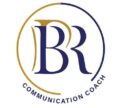Learning Pronunciation has been a huge challenge when it comes to English. I remember one of my trainers asking us “why is ‘ut’ pronounced differently in ‘put’ and ‘cut’?” I recently came across a meme where a person was worried that every ‘c’ is pronounced differently in ‘Pacific ocean’. It’s because there are 26 letters in English but there are 44 phonetic sounds.
Is it possible to learn all the phonetic sounds? Even if we learn, is it possible to implement them correctly while speaking? Well, it is possible to learn the sounds and implement them. Learning the sounds gives us the awareness. BBC Learning English has a wonderful playlist on their YouTube channel where all the phonetic sounds are taught with good examples. Once we have the awareness of those sounds, it is extremely important to start observing how they are used in the language naturally. You can do this by listening to radio news from BBC or watching short videos from National Geographic or History channels on YouTube. You can do this by watching movies as well.
Listening helps us in enhancing pronunciation and fluency. As ‘listening’ is a skill, it needs practice. Many students have told me listening didn’t help them but it could be because they did not follow everything one needs to follow while practicing listening skills to help them enhance their pronunciation and fluency.
Following are the steps to use listening skills to get better at pronunciation and speaking:
1. Choose short video or audios – less than 5 minutes
2. Watch the same video a couple of times to understand the content better
3. Speak about what you listened to and record your voice
4. Listen to your voice recording
5. Repeat it regularly as long as you can.
If you follow these 5 steps, listening will certainly help you.
Reading aloud also helps in enhancing pronunciation.
Steps:
1. Choose any edited material like a standard book or magazine article to read (select a page)
2. Read quietly once
3. Read aloud with appropriate intonation and tone
4. Read aloud again and record. If you send the recording to you trainer or teacher, they can help.
